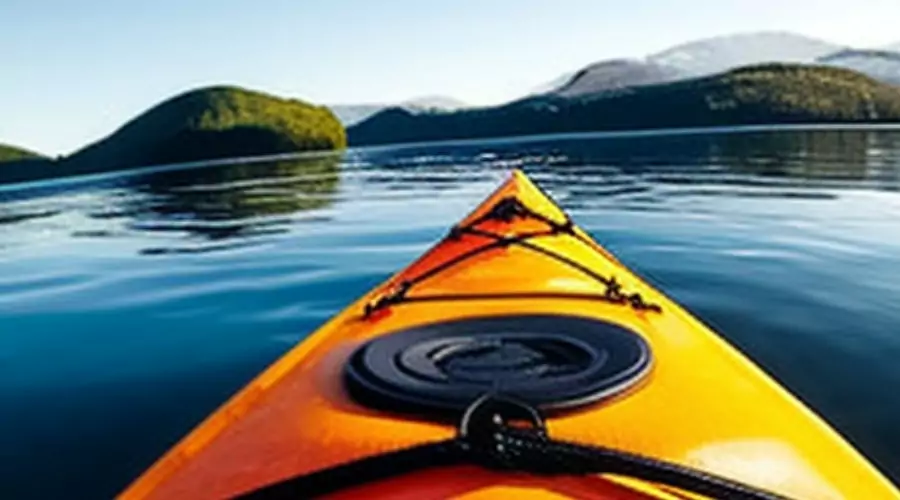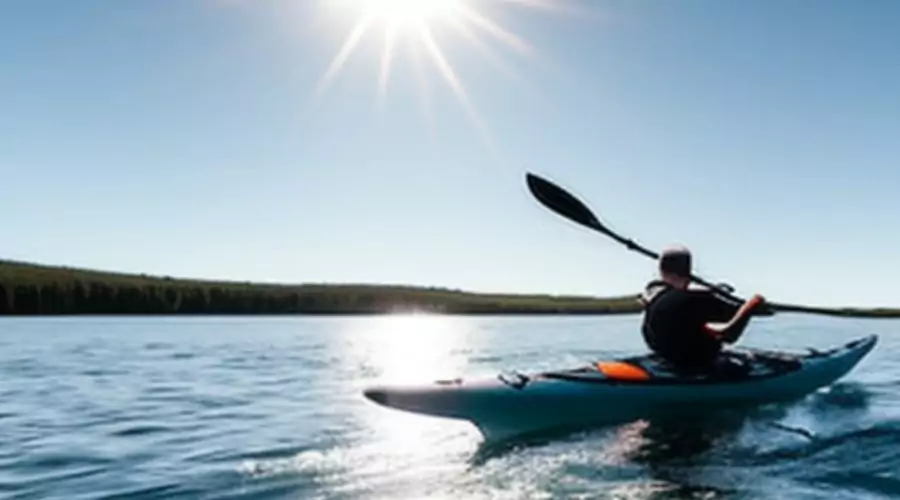Kayak fishing is a popular and exciting way to enjoy the outdoors and catch some fish at the same time. Whether you’re a seasoned angler or a beginner, it’s important to be prepared and practice safe techniques to make the most of your kayak fishing experience.
In this blog post, we’ll share essential tips to help you get started and improve your kayak fishing skills.
Table of Contents
Choosing the Right Kayak
Types of kayaks (sit-in, sit-on-top, inflatable, etc.) When it comes to kayak fishing, there are a few different types of kayaks to choose from. Sit-in kayaks are more enclosed and offer more protection from the elements, but they can also be more difficult to get in and out of. Sit-on-top kayaks are more open and easier to get in and out of, but they don’t provide as much protection from the elements.
Inflatable kayaks are a good option if you’re looking for something lightweight and easy to transport, but they can be less durable than hardshell kayaks.
Considerations for length, width, stability, and storage When choosing a kayak, it’s important to consider the length, width, stability, and storage. Longer kayaks are faster and more efficient, but they can also be more difficult to maneuver.
Wider kayaks are more stable, but they can also be slower. Stability is also important for kayak fishing because you’ll need to be able to stand up and cast your line without tipping over. Storage is also an important consideration because you’ll need to be able to store your fishing gear and any fish you catch.
Accessories to enhance the fishing experience (rod holders, anchors, etc.) There are a variety of accessories available to enhance your kayak fishing experience. Rod holders, for example, allow you to keep your rod upright and ready to fish, even when you’re not casting. Anchors are also useful accessories, as they allow you to hold your kayak in place and fish in a specific spot. Other popular accessories include fish finders, GPS units, and cameras.

Essential Equipment
Fishing rod and reel
Of course, the most essential piece of equipment for kayak fishing is your fishing rod and reel. When choosing a rod and reel, consider the type of fish you’re trying to catch and the conditions you’ll be fishing in. You’ll also want to make sure your rod and reel are the right size and weight for your kayak. For example, a light fishing rod and reel will be better for smaller fish, while a heavier rod and reel will be better for larger fish.
Bait and lures
Bait and lures are also essential pieces of kayak fishing equipment. You’ll need a variety of different baits and lures to attract different types of fish. Some popular types of bait include worms, minnows, and crickets. Lures, on the other hand, are designed to mimic the movement and appearance of various types of baitfish, insects, and other prey that fish are known to eat.
Life jacket and personal flotation device
Safety should always be a top priority when kayak fishing. A life jacket and personal flotation device (PFD) can save your life in the event of a capsize or another emergency. Look for a life jacket that is comfortable and fits well, and make sure it is properly secured before you head out on the water.
Safety equipment (whistle, signaling device, etc.)
In addition to a life jacket and PFD, it’s important to carry other safety equipment when kayak fishing. A whistle or other signaling device can be used to call for help if you get into trouble. A flashlight, flares, or another signaling device can also be useful in low-light conditions. A waterproof phone case and a power bank will also be a good idea to have, in case of an emergency or if you need to call for help.
Planning your Trip
Choosing the right location
Choosing the right location is key to a successful kayak fishing trip. You’ll want to consider factors such as the type of fish you’re trying to catch, the time of year, and the tides and currents. Some popular kayak fishing spots include bays, estuaries, and coastal areas. You may also want to consider fishing in freshwater locations such as rivers, creeks, and lakes.
Tides and currents
Tides and currents can have a big impact on kayak fishing. Knowing the tide schedule can help you plan your trip and know when to be on the water. During low tide, for example, you may have better access to shallow areas where fish like to feed. During high tide, on the other hand, you may have better access to deeper areas where fish like to swim.
Weather and wind conditions
Weather and wind conditions can also have a big impact on kayak fishing. Before you head out, check the forecast and be prepared for different weather conditions. Wind can make it more difficult to paddle and fish, so it’s best to plan your trip for days with little to no wind. Keep an eye on the weather forecast and be ready to head back to shore if the weather deteriorates.
Obtaining necessary permits and licenses
Before you head out on the water, make sure you have all the necessary permits and licenses. These can vary depending on the location and the type of fishing you’re doing. Be sure to check the regulations for the specific area you’ll be fishing in and obtain any necessary permits or licenses before you head out. This will ensure you’re following all the rules and regulations and will prevent any issues with the authorities.
When planning your trip, it’s important to be well-informed and well-prepared. By considering factors such as the type of fish you’re trying to catch, the tides and currents, the weather and wind conditions, and obtaining necessary permits and licenses, you’ll be able to have a much more successful and enjoyable kayak fishing trip.
Advanced Techniques

Trolling and drifting
Trolling and drifting are advanced techniques that can help you cover more water and increase your chances of catching fish. Trolling involves slowly moving your kayak while baiting and casting your line behind you. Drifting, on the other hand, involves allowing your kayak to move naturally with the current while baiting and casting your line. Both techniques can be effective for catching a variety of fish species, but they do require some practice and skill to master.
Casting and retrieving
Casting and retrieving are basic techniques that are essential for kayak fishing. However, as you gain more experience, you can learn to cast farther and more accurately. Learning to cast with both hands and to use different lures will also improve your chances of catching fish. Retrieving is also important, you should learn to reel in your line smoothly and at the right speed to keep the fish on the hook.
Fly fishing
Fly fishing from a kayak can be a challenging but rewarding experience. This technique requires a specialized rod, reel, and fly line, as well as a different set of skills and techniques than traditional fishing. The main idea is to mimic the movement of the fly, to trick the fish into biting. Fly fishing can be done in freshwater or saltwater and can be a great way to catch a variety of fish species.
Using electronic fish finders and GPS
Electronic fish finders and GPS units can be useful tools for kayak fishing. Fish finders can help you locate fish by displaying the location of fish and other underwater structures on a screen. GPS units can help you navigate and mark your favorite fishing spots, making it easier to return to them in the future.
These technologies can greatly enhance your kayak fishing experience, but they do require some knowledge and practice to use effectively.
By mastering these advanced techniques, you’ll be able to take your kayak fishing skills to the next level and increase your chances of catching more and bigger fish. Remember to always be safe and have fun while you’re on the water.
What are some essential tips for kayak fishing?
- Invest in a good quality kayak: Kayak fishing requires a stable and comfortable vessel that can handle choppy waters and heavy loads. Look for a kayak with plenty of storage space, a sturdy design, and comfortable seating.
- Get familiar with your equipment: Before heading out, make sure you are familiar with all of your fishing equipment, including your rod, reel, and bait. Practice casting and reeling in so that you can do it quickly and smoothly when you’re on the water.
- Dress for the weather: Always check the weather forecast before heading out and dress appropriately. Wear a life jacket, and protective clothing, and bring sunblock, sunglasses, and a hat.
- Plan your trip: Before setting out, plan your trip by researching fishing spots, tides, and weather conditions. Also, make sure to have a map of the area and a communication device with you.
- Be aware of safety: Safety should be your number one priority while kayaking fishing. Make sure you know the rules and regulations of the area you’re fishing in, and always keep an eye on the weather and water conditions.
- Be stealthy: Kayaks are quiet and can be a great way to sneak up on fish, but you still need to be aware of the wind and waves. Try to approach the fish from downwind or down current and avoid making too much noise.
- Be prepared to deal with the catch: Bring a cooler or a fish basket to keep your catch fresh, and a landing net to help you retrieve the fish. Also, make sure you know the rules and regulations for keeping and releasing fish in the area you’re fishing in.
Conclusion
In this blog post, we’ve shared essential kayak fishing tips to help you get started and improve your skills. From choosing the right kayak and equipment to planning your trip and mastering advanced techniques, these tips will help you make the most of your kayak fishing experience.
As we’ve stressed throughout this post, safety should always be your top priority when kayak fishing. Remember to wear a life jacket, carry the necessary safety equipment, and be aware of the weather and wind conditions.
Additionally, it’s important to be responsible when fishing, following the rules and regulations and respecting the environment.
Kayak fishing is a fun and exciting activity that can be enjoyed by people of all ages and skill levels. By following the tips and techniques outlined in this post, you’ll be well on your way to becoming a skilled kayak fisherman. However, kayak fishing is a constantly evolving activity, and there’s always more to learn and discover. So, keep practicing and experimenting, and enjoy the journey of becoming a proficient kayak fisherman.
